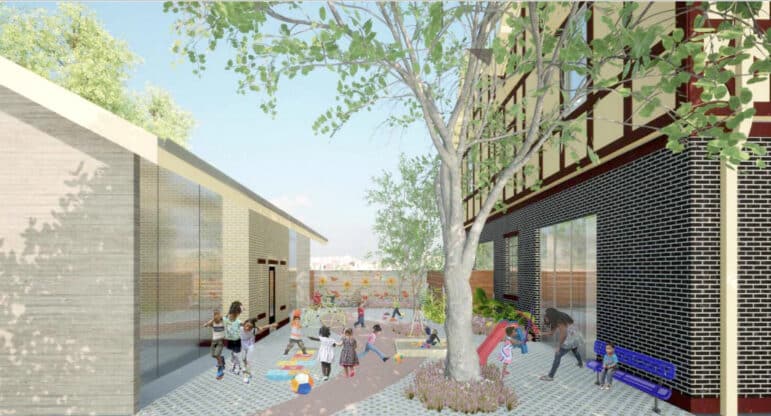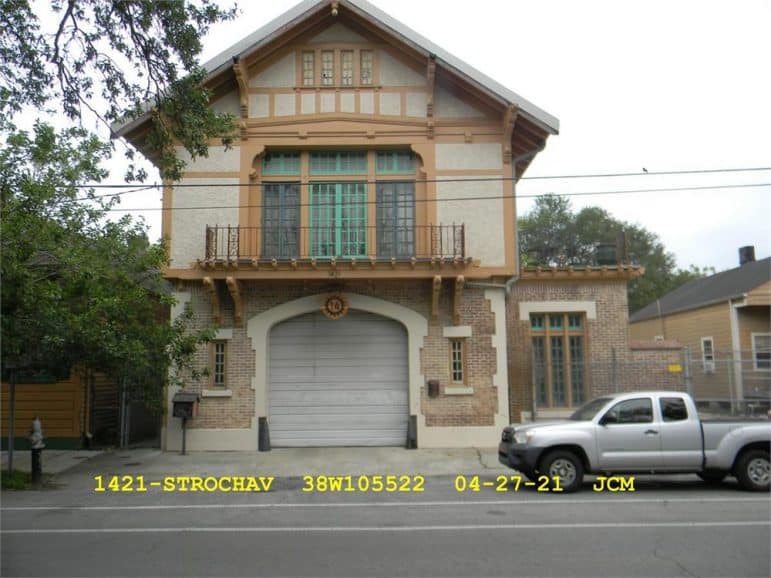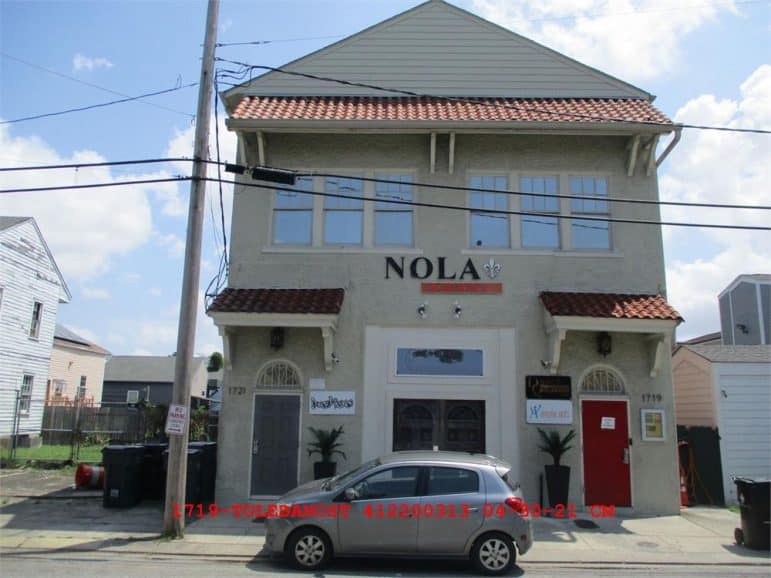|
|
|
|
|
|

Getty Images
NEW ORLEANS – The New Orleans Redevelopment Authority (NORA) and City of New Orleans have announced a $5 million expansion of the Community Adaptation Program for low-to-moderate-income homeowners to manage stormwater on their properties across the city. To date, NORA said it has completed 179 projects in Gentilly through its original $5.9 million allocation from the $141 million National Disaster Resilience grant from the U.S. Department of Housing and Urban Development.
The existing NDR-funded program in Gentilly provides up to $25,000 worth of residential-scale stormwater management interventions at no cost to homeowners. Participating CAP homeowners can choose from a variety of green infrastructure improvements such as the installation of permeable pavement (including to replace impervious concrete surfaces like patios and driveways), stormwater planter boxes, tree plantings, infiltration trenches, rain barrels, and rain gardens. NORA currently partners with four local Disadvantaged Business Enterprise and non-profit organizations (Dana Brown and Associates, Thrive New Orleans, Ubuntu Construction, and Wingate Engineers) to complete the design and construction work.
Cumulatively, the first 179 completed CAP projects are able to store 532,306 gallons (the equivalent of approximately 6,653 bathtubs) of stormwater in the Gentilly area, allowing it to remain on site and gradually infiltrate the underlying soil instead of entering the City’s drainage system. On average, each CAP home site can manage at least an inch of rainfall on the property.
“The New Orleans Redevelopment Authority is excited to expand our partnership with the City of New Orleans through the allocation of additional funding to the successful Community Adaptation Program in Gentilly and to introduce these critical green infrastructure interventions to homes and neighborhoods across the city through a new bond-funded program,” said NORA Executive Director Brenda M. Breaux in a press release. “Stormwater management on private property is a key strategy for our city to reduce stormwater runoff and free up existing capacity in our grey infrastructure system. If each property could detain the first inch of rainfall on-site, in addition to the inch that can be managed by our pipes and pumps in the first hour, we could greatly increase our collective capacity and reduce the number and severity of flood events.”
“This additional funding could not come at a better time, as this gives our working-class homeowners an added layer of protection and security in the wake of peak hurricane season at no cost to them,” said Mayor LaToya Cantrell. “I am grateful for this partnership with NORA that will help expand our flood mitigation efforts and further showcase New Orleans as a model for how to build back as a more resilient city. The City of New Orleans remains on the frontlines of climate change and will continue to invest in green infrastructure improvement projects to ensure our people are well-equipped and prepared for this uncertain and challenging future.”
The $5 million expansion includes an increased allocation of NDR funds for additional projects in Gentilly as well as a new allocation of General Obligation bond funds for projects in neighborhoods across the city. NORA is currently accepting applications from low-to-moderate-income (up to $62,700 for a family of four) homeowners for the existing NDR-funded Community Adaptation Program in Gentilly. The pre-application and more information about the Gentilly program can be found at noraworks.org/cap. Applications for the new bond-funded program for the rest of the city are expected to be available this fall
FOR IMMEDIATE RELEASE
July 25, 2022
New Orleans Redevelopment Authority to Auction 25± Commercial Properties and 90+ Residential Properties in Citywide Online-Only Auction
The auction is open to the public. Anyone can register to bid on the properties.
NEW ORLEANS, LA - The New Orleans Redevelopment Authority (NORA) is conducting another ONLINE-ONLY auction of 25+ Commercial lots and 90+ Residential vacant lots and structures located citywide. Bidding for this online auction event for the Commercial properties will begin at 8:00 a.m. (CT) Monday, August 22, 2022, and end between 3:00 p.m. and 5:00 p.m. (CT) on Tuesday, August 23, 2022. Bidding for the Residential properties will begin at 8:00 a.m. (CT) on Wednesday, August 24, 2022, and end between 12:00 p.m. and 6:00 p.m. (CT) on Thursday, August 25, 2022.
The properties will sell “AS-IS, WHERE-IS” to the highest bidder. Properties are subject to a minimum bid price of $5,000 per property for Commercial lots and $4,000 per property for Residential lots. There will be a Buyers’ Seminar on Wednesday, August 10, 2022 at 6:00 p.m. This event will be done virtually. Visit hilcorealestate.com/NORA for log-in details.
There are three (3) structures being offered that will be open before the auction for inspection on Thursday, August 11, 2022. Please visit www.hilcorealestate.com/NORA for exact times and instructions.
“As with our previous auctions, we are continuing to receive hundreds of inquiries. We are excited to make available this next pool of properties through this online auction event,” stated Brenda M. Breaux, NORA’s Executive Director.
Winning bidders are required to complete rehabilitation or construction on the properties within 365 days from the date of closing for the Residential sites and 545 days (18 months) from the date of closing for the Commercial sites in accordance with the City of New Orleans’ Code of Ordinances. The requirement to maintain the property begins immediately after closing through completion of the rehabilitation or construction. Winning bidders may use the Residential property for green space if their property is directly adjacent to the property acquired at the auction.
For more information and to register, please contact Fernando Palacios at 504-233-0063 or visit www.hilcorealestate.com/NORA.
###
The New Orleans Redevelopment Authority is a catalyst for the revitalization of the city, partnering in strategic developments that celebrate the city’s neighborhoods and honor its traditions.

Affordable housing, child-care center proposed for blighted firehouse
By Jesse Baum, Uptown Messenger | 16 hours ago

2314 Louisiana Ave.
A blighted firehouse on Louisiana Avenue could be transformed into affordable housing and an early childhood center, if plans submitted to the New Orleans Redevelopment Authority are granted final approval
The proposal was presented Wednesday evening (July 27) at a public Zoom meeting to inform the community about ongoing plans for renovating and repurposing the disused firehouse on 2314 Louisiana Ave.
Mid-July marked the close of NORA’s solicitation for development proposal period, and the organizations Home by Hand and Alembic Community Development presented their joint plans for the site. Their proposal would see the old firehouse renovated to become an early childhood education center on the ground floor and seven affordable rental units on the two floors above.
“One of the requirements of the program is that any development that arises from the [NORA-run] program must create either affordable housing units or economic development opportunities in the form of jobs,” said NORA project manager Kyle Gilmore.
The city is leasing the property to NORA for a 99-year term; NORA will then sublease it to a development partner that administers the overall process of putting the building back into use.
According to NORA, an award for the sub-lease will be granted Aug. 8 to the winning applicant for redevelopment. Though many groups reportedly expressed interest in the property, two organizations applied for the sub-lease. The proposals were then evaluated by a team of NORA and city employees.
“Three people from NORA and two from the city of New Orleans did the scoring, and Home by Hand had the highest score. And that’s why we’ve asked them to come present their plan,” Gilmore said.
Home by Hand is a local nonprofit that develops newly constructed energy-efficient homes for low- and moderate-income residents. It has developed more than 200 homes throughout the city while also providing financial coaching to help clients build generational wealth.
Alembic Community Development, its partner for the project, focuses on redeveloping historic buildings as affordable housing, commercial space and community facilities. Its projects include the H3C affordable housing and community health-care complex under construction on the former Brown’s Dairy lot on Oretha Castle Haley Boulevard.
“We’re really, really excited to share our collective vision of the firehouse property, which includes seven permanently affordable apartment units that will operate with cohesion with the ground floor, which we are looking at as an early childhood learning center,” said Oji Alexander, executive director of Home by Hand.
The renovations would mean completely remodeling the interior, restoring the building’s façade, and landscaping about 1,500 square feet of outdoor space.
“ [The] early childhood learning center will be utilized not just by the tenants in the affordable housing but also for the surrounding community,” Alexander said.
In April, voters in Orleans Parish passed a city-wide millage aimed at funding 1,000 additional spots in New Orleans’ City Seats program, which helps fund early childhood education. Providers say the program has allowed for greater professional development and increased salaries for workers as well as greater resources for children.
The proposed early childhood education center would be wheelchair accessible and will potentially have the capacity for 50 children to attend the programs offered there. Jonathan Leit of Alembic noted that there is a desperate need for affordable early childhood education in New Orleans.
The New Orlean-based organization Agenda for Children, which administers City Seats, states on its website that “an estimated 70% of low-income children under four don’t have access to high-quality early-childhood education.”
“We know what the impact of that will be, the impact is that [lack of early education] perpetuates racial inequity over generations,” Leit said.
“During this RFP process, we’ve been talking to people and providers. We’ve been talking to whole networks that are involved in supporting these child-care operators. What we learned is that they’re supposed to create new facilities or expand and improve the existing ones,” Leit continued.
The No. 1 concern for the operators is zoning. Early childhood centers are not permitted in many areas around the city. However, the firehouse’s zoning does permit a child-care center.
And the No. 2 concern is the lack of affordability in the local real estate market, Leit said.
Leit said that Alembic has been talking with potential operators for the education center, but as their team has not officially been granted the space, these talks have been preliminary. Leit declined to name specific organizations.

via NORA
An outdoor play area and a rear auxiliary building are planned for the early-childhood center.
All the upstairs apartments would be earmarked as affordable units for residents making below an income threshold based on a percentage of the area median income (AMI).
There are four one-bedroom units planned, with one designated for a renter making below 50% AMI, or about $31,400 per year for a two-person household, and three marked for renters making below 60% AMI, or $37,680 a year for a two-person household.
There will also be three two-bedroom units, two marked for below 60% AMI, or $42,360 per year for a household of three, and one for a renter below 80% AMI, or below $56,480 a year for a three-person household.
The early plans for the space show two-story apartments with kitchens and living areas on the building’s second floor and loft bedrooms on the top floor. The planned units will not be wheelchair-accessible.
The development team has named Studio Kiro, based in Central City, as the project architect. Studio Kiro is also the architect on a nearby high-profile historic renovation, the Dew Drop Inn on LaSalle Street. CDW Services will be the general contractor.
After the presentation, the meeting hosts opened up the floor for questions.
“Can you describe the application process for eligible tenants?” meeting attendee Brandon Surtain asked. Alexander replied that the application process would be “in-house,” created by Home by Hand.
Other questions focused on parking. While the property does not have off-street parking, the development team plans to work with the Department of Public Works to create reserved frontage for deliveries as well as child-care drop-off and pickup.
On Aug. 8, NORA’s board will make the final decision on awarding the property to the winning proposal.
The development team will then work through fall on securing financing for the project, which will likely include federal and state historic tax credits and low-income housing tax credits, along with funding from the city and philanthropic sources.
Construction is set to begin sometime next year, with a planned completion date in 2024.
Reporter Jesse Baum can be reached at This email address is being protected from spambots. You need JavaScript enabled to view it..

New Orleans Redevelopment Authority, Former firehouse at 2314 Louisiana Ave.
The New Orleans Redevelopment Authority is taking steps to renovate the dilapidated firehouse at 2314 Louisiana Ave. The agency is seeking community input on how to redevelop the 7,000-square-foot city-owned building.
On Wednesday evening (March 10), NORA hosted a community meeting via Zoom. The historic firehouse is blighted, and NORA’s goal put it back into commerce.
Seth Knudsen, NORA’s real estate development director, said the vacant firehouse is zoned as a historic urban mixed-use district, or HU-MU, which permits residential use as well as a variety of commercial uses from child care to medical and dental clinics to grocery stores and more.
“When we consider the range of things that’s permitted, this is among the most diverse zoning districts in the city and really contemplates a pretty wide range of possible future uses for the structure,” Knudsen said.
NORA manages thousands of properties that are deemed blighted, including those acquired from the Road Home program following Hurricane Katrina. Created by the state in 1968, NORA is a public agency charged with revitalization of the city’s underinvested areas.
In the case of the firehouse, NORA is the lessee of the property for a period of 99 years, and facilitates the redevelopment process, including overseeing construction bids.
After NORA’s brief presentation on the project, the (virtual) floor was opened for ideas of how the property could be used to best serve the community.
One attendee, Jason Riggs, suggested the property could be a community center with after-school programs, while Donna Robertson of the Delachaise Neighborhood Association said that she would pose the question to the group and get back to NORA officials with their responses.
Attendee Ron Collins suggested that the building could be a technical training center, elaborating that the training could be “in something maybe that doesn’t need a degree. …[People could] get hands-on training and be able to use those skills to go directly into the workforce.”
When Uptown Messenger asked if the work on the property would preserve and restore the facade of the old firehouse, Knudsen replied that this was very likely, though not assured.
“I think it’s a pretty strong assumption, going into it, for us. I don’t know that we will exclude … proposals on the front end that might envision some changes to the exterior,” said Knudsen, who also noted that the eventual developers could use historic building tax credits or historic preservation grants.

Orleans Parish Assessor's Office, The Old Firehouse, 718 Mandeville St.

Orleans Parish Assessor's Office, 1421 St. Roch
An old Fire Department station in the Marigny’s Mandeville Street and another in the St. Claude area on St. Roch Avenue have been renovated with their original exteriors restored. The Marigny firehouse is used as a co-working space, and the St. Roch firehouse is a private residence. An Uptown fire station on Toledano Street, not far from the Louisiana Avenue site, serves as a dance studio and event venue. All of these buildings are now privately owned.

Orleans Parish Assessor's Office, NOLA Spaces, 1719 Toledano St.
Uptown Messenger also asked Knudsen if the site was guaranteed to have some of the space used as housing when the renovations were completed.
NORA’s agreement with the city is that the property be used in a way to promote affordable housing and economic development.
“So I think the proposals could skew very heavily one way or the other,” Knudsen said. “It could be all housing or mostly housing, or it could be all economic development or mostly economic or some combination of the two.”
The property is well situated to have commercial use on the bottom floor and housing on the top, he noted, similar to how many historic storefronts in New Orleans were originally used when they were built.
The next step for the project is soliciting developers. According to NORA’s timeline, construction is set to begin next year and will be completed in 2024.
To contact NORA with questions or to provide input for the project, click here.